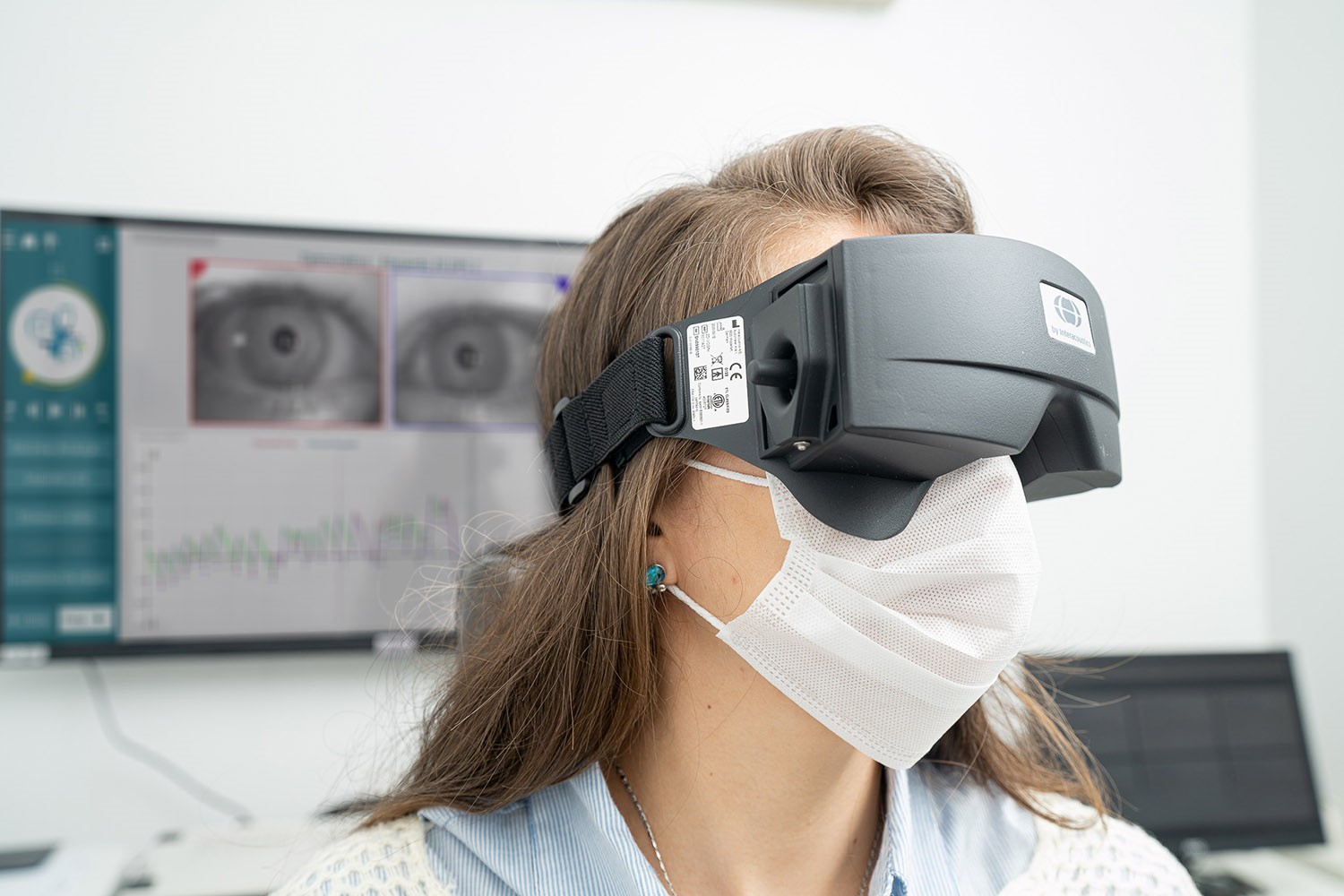
Bedside vestibular test with infrared videonystagmography (VNG)
Infrared videonystagmography, which studies eye movements, is a key test for assessing patients with vertigo
Infrared videonystagmography, the evaluation of the vertigo patient
The assessment of the vertigo patient is closely linked to the collection of clinical information (anamnesis) and the ‘bedside’ test, i.e. the evaluation of the patient on the examination couch.
About 90 per cent of vertigo patients obtain an accurate diagnosis, or at least diagnostic guidance, from these two fundamental moments.
In the ear is the posterior vestibule, which is responsible for detecting movement and maintaining static and dynamic balance.
Eye movement is the monitor of vertigo.
The vestibologist during a vertiginous crisis studies the ear by looking the patient in the eyes!
In fact, when one or both vestibules are affected, an involuntary movement of the eyes, nystagmus, appears, giving the illusion of movement of the surroundings.
A key test is infrared videonystagmoscopy
Videonystagmography is a test that allows eye movements to be seen by the patient, who wears an obscuring mask to inhibit visual fixation, which has the effect of reducing nystagmus.
An infrared camera frames the eyes and their movement either spontaneously (spontaneous nystagmus) or caused by specific manoeuvres performed on the patient’s couch by the examiner.
By observing the direction of the nystagmus, also in relation to the movements the patient is made to perform, it is very often possible to make a very accurate diagnosis or to schedule second-level examinations such as VEMP’s (myogenic vestibular evoked potentials), vestibular caloric tests or a possible MRI.
The nystagmus detected by the infrared camera is recorded on a computer for later observation or for clinical studies on temporal parameters (speed, amplitude, direction, etc).
Read Also
Emergency Live Even More…Live: Download The New Free App Of Your Newspaper For IOS And Android
The Vestibular Rehabilitation Of Vertiginous Patients
Vestibular Examination: The Test For Balance Disorders
Inner Ear Disorders: Meniere’s Syndrome Or Disease
Benign Paroxysmal Positional Vertigo (BPPV): Causes, Symptoms And Treatment
Paediatrics, What Needs To Be Known About Childhood Otitis
Headaches And Dizziness: It Could Be Vestibular Migraine
Migraine And Tension-Type Headache: How To Distinguish Between Them?
Benign Paroxysmal Positional Vertigo (BPPV): Symptoms And Liberating Manoeuvres To Cure It
Parotitis: Symptoms, Treatment And Prevention Of Mumps
Acute And Chronic Sinusitis: Symptoms And Remedies
Tinnitus: What It Is, What Diseases It Can Be Associated With And What Are The Remedies
Barotrauma Of The Ear And Nose: What It Is And How To Diagnose It
How To Remove Something From Your Ear
What To Do In Case Of Earache? Here Are The Essential Check-Ups
Perforated Eardrum: What Are The Symptoms Of A Tympanic Perforation?
Earache After Swimming? Could Be ‘Swimming Pool’ Otitis
Swimmer’s Otitis, How Can It Be Prevented?
Deafness: Diagnosis And Treatment
Otitis: External, Medium And Labyrinthitis


